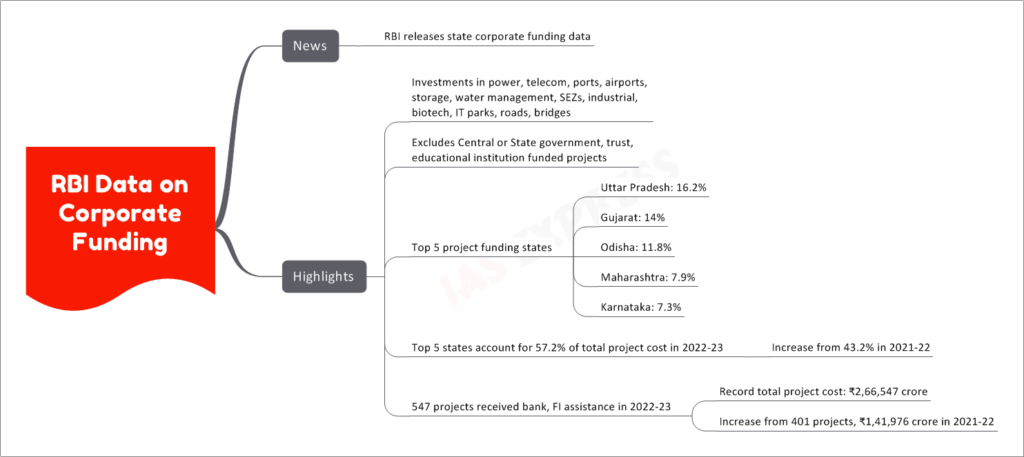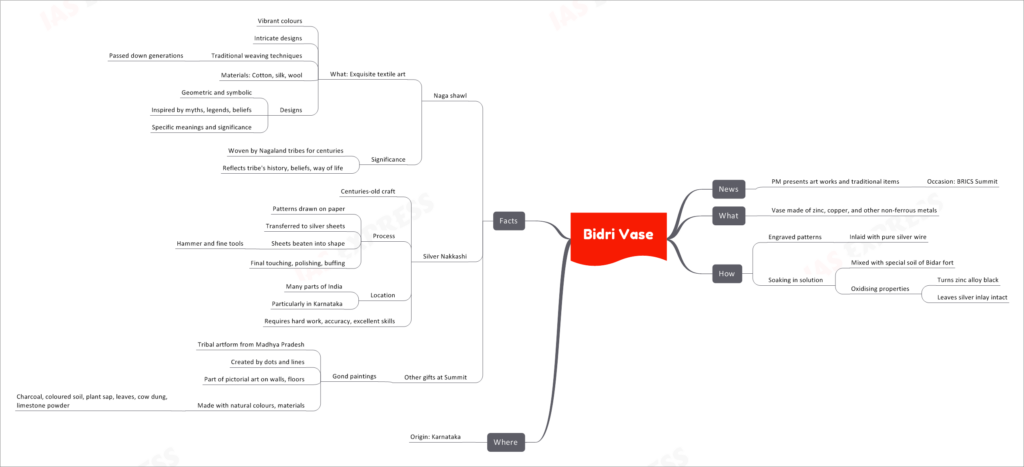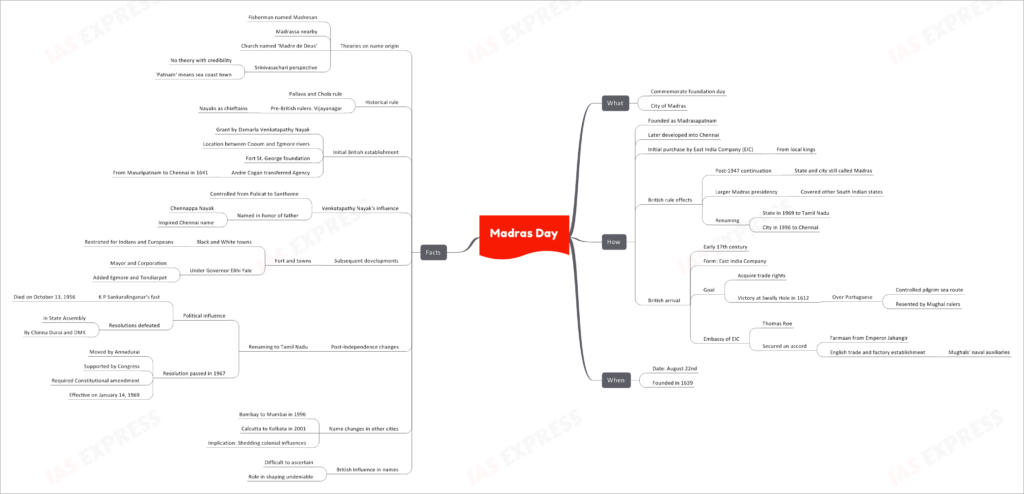[Newsbits] 25.08.2023

RBI Data on Corporate Funding
The recent release of state corporate funding data by the Reserve Bank of India (RBI) sheds light on the patterns of investments and projects across various sectors. The data provides insights into the distribution of funding among different states and sectors, offering a comprehensive view of the corporate funding landscape.
Diverse Investment Landscape
Broad Spectrum of Investments
The RBI's data showcases investments in a diverse range of sectors, including power, telecom, ports, airports, storage, water management, SEZs (Special Economic Zones), industrial projects, biotechnology, IT parks, roads, and bridges. These investments reflect the multi-faceted nature of corporate funding in the country.
Exclusion Criteria
The data specifically excludes projects funded by the Central or State government, trusts, and educational institutions. The focus is on corporate projects that receive funding from banks and financial institutions.
Key Insights from the Data
Leading States in Project Funding
The data highlights the top five states that secured the highest project funding in the specified period:
- Uttar Pradesh: 16.2% of total project funding
- Gujarat: 14%
- Odisha: 11.8%
- Maharashtra: 7.9%
- Karnataka: 7.3%
Concentration of Funding
The top five states accounted for a significant 57.2% of the total project cost in the fiscal year 2022-23. This indicates a notable increase from the 43.2% recorded in the previous fiscal year (2021-22).
Surge in Assisted Projects
The data reveals that a total of 547 projects received assistance from banks and financial institutions in the fiscal year 2022-23. These projects collectively accounted for a record-breaking project cost of ₹2,66,547 crore. This is a substantial increase from the 401 projects that received assistance amounting to ₹1,41,976 crore in the fiscal year 2021-22.
Reinsurance
In the recently held IRDAI 123rd Authority Meeting, significant amendments to reinsurance regulations were approved, reflecting efforts to enhance the insurance landscape in India. Reinsurance, a vital component of the insurance industry, serves as a safety net for insurance companies, protecting them from the impact of substantial losses.
Understanding Reinsurance
What is Reinsurance?
Reinsurance can be understood as insurance for insurance companies. It's a mechanism designed to shield insurers from the volatility that can arise due to large and unexpected losses. Through reinsurance, insurance companies transfer a portion of their risks to other insurers, thereby minimizing their exposure to potential financial shocks.
Sharing Risk for Stability
The process of reinsurance involves insurance companies sharing their risks with other insurers. This is done by purchasing insurance policies from these reinsurers. By doing so, insurance companies limit their potential losses in the event of a disaster or major claim. This strategy also allows them to spread the risk associated with large coverage obligations.
A Collaborative Approach
Reinsurance operates on the principle of shared responsibility. The premiums paid by policyholders are not solely absorbed by the primary insurance companies; they are distributed among all the insurers involved in the reinsurance arrangement. This equitable distribution of premiums ensures that the financial impact of substantial claims is absorbed collectively.
Key Facts and Market Dynamics
Evolution of Reinsurance in India
- Following its demerger and the subsequent de-nationalization in 2000, GIC (General Insurance Corporation) emerged as the sole Indian reinsurer.
- Foreign Reinsurers Branches (FRBs) were introduced in 2016, following an amendment to the Insurance Act.
Reinsurance's Role in the Indian Insurance Landscape
- In the Indian non-life insurance market, the total size was approximately ₹1.26 lakh crore in the last fiscal year.
- Of this, nearly ₹28,900 crore was in the form of reinsurance premiums.
- A significant portion of these reinsurance premiums, approximately ₹11,000 crore, were ceded to overseas reinsurers known as Cross Border Reinsurers (CBRs).
- GIC, with a dominant market share of 60%, plays a pivotal role in supporting the Indian market, even amid challenges posed by low primary market prices.
Ensuring Quality and Mitigating Risk
- Foreign branches of reinsurers tend to select risks based on quality and loss experience. This practice ensures a well-balanced portfolio that enhances stability for both the primary insurers and reinsurers.
China-Bhutan Expert Group Meeting
In recent news, the 13th Expert Group Meeting between China and Bhutan has garnered attention for its focus on boundary delimitation. This meeting marks a significant step in addressing a long-standing issue between the two nations.
Bridging the Boundary Divide
Exploring Boundary Delimitation
The central theme of the 13th Expert Group Meeting between China and Bhutan revolves around boundary delimitation. This complex task involves defining and demarcating the precise territorial boundaries between the two nations.
Initiating Deliberations: The Joint Technical Team
A noteworthy aspect of this meeting is the convening of the first session of the Joint Technical Team. This team has been established specifically to engage in the delimitation of the disputed boundary, setting the stage for potentially constructive discussions.
The Significance and Implications
Rekindling Dialogue After a Hiatus
This meeting holds exceptional significance as it marks the first formal dialogue between China and Bhutan regarding the boundary issue since 2016. A prolonged lack of discussions has amplified the complexity of the matter.
Impact on India: The "Swap Arrangement"
India is observantly monitoring the developments in this meeting due to its ramifications, particularly the potential for a "swap arrangement." This pertains to the regions of Jamparlung and Pasamlung valleys in the north and the Doklam plateau in the west. These areas are in close proximity to India's strategic Siliguri corridor and were a focal point of the India-China stand-off in 2017.
Location and Historical Context
Venue: Beijing
The 13th Expert Group Meeting was hosted in Beijing, serving as a neutral ground for discussions between China and Bhutan.
A Prolonged Journey
The boundary talks between China and Bhutan were initiated in 1984. The 24th round of discussions took place in 2016, and there had been a subsequent pause in formal dialogue, especially after the Doklam stand-off in 2017.
The Road Ahead
Focusing on Disputed Regions
The discussions primarily concentrate on disputed areas, notably the northern regions of Bhutan and the western lands abutting the Doklam plateau.
A Three-Step Road Map
The progress made in the 13th Expert Group Meeting aligns with the three-step road map outlined in the Memorandum of Understanding (MoU) signed in October 2021. This roadmap reflects a mutual commitment to navigating the complex issue of boundary delimitation.
Bidri Vase
During the recent BRICS Summit, Prime Minister Narendra Modi presented a selection of remarkable artworks and traditional items, exemplifying India's rich artistic heritage and cultural diversity. One of the notable pieces showcased was the Bidri Vase, a stunning work of art that captures the essence of intricate craftsmanship.
The Bidri Vase: A Masterpiece of Metalwork
Crafting the Bidri Vase
The Bidri Vase is a remarkable creation made from a blend of zinc, copper, and other non-ferrous metals. Its distinctive beauty lies in its engraved patterns, which are meticulously inlaid with pure silver wire. The process involves soaking the piece in a solution mixed with the special soil found in the Bidar fort. This soil possesses oxidizing properties that turn the zinc alloy black while leaving the silver inlay unaltered.
A Karnataka Treasure
Originating from the state of Karnataka, the Bidri Vase exemplifies the region's traditional metalwork artistry. It is a testament to the skilled craftsmanship of artisans who have honed their techniques over generations, creating objects of remarkable beauty and cultural significance.
The Naga Shawl: A Textile Art Marvel
Vibrant Textile Artistry
The Naga Shawl, an exquisite textile art, dazzles with its vibrant colors and intricate designs. Crafted using traditional weaving techniques passed down through generations, these shawls are made from materials like cotton, silk, and wool.
Symbolic Designs and Significance
Naga shawls boast designs that are both geometric and symbolic, drawing inspiration from myths, legends, and beliefs. Each pattern carries specific meanings and significance, reflecting the tribe's history, beliefs, and way of life. These textiles have been woven by Nagaland tribes for centuries, serving as tangible representations of their cultural heritage.
Silver Nakkashi: A Centuries-Old Craft
An Art of Precision
Silver Nakkashi, a centuries-old craft, involves a meticulous process. Artisans begin by drawing intricate patterns on paper, which are then transferred onto silver sheets. These sheets are carefully beaten into shape using hammers and fine tools. The final touches, including polishing and buffing, reveal the mesmerizing beauty of the silverwork.
Widely Practiced
While Silver Nakkashi is practiced in many parts of India, it particularly thrives in Karnataka. The craft demands a combination of hard work, accuracy, and exceptional skills, resulting in exquisite pieces of art that reflect the dedication of the artisans.
Treasures from Diverse Regions
Gond Paintings: A Visual Tapestry
Gond paintings, a tribal art form from Madhya Pradesh, were also among the gifts presented at the Summit. These creations are characterized by intricate dots and lines, forming pictorial art on walls and floors. Crafted using natural colors and materials such as charcoal, colored soil, plant sap, leaves, cow dung, and limestone powder, Gond paintings offer a unique glimpse into tribal artistry.
Dadi Prakashmani
In recent news, a postage stamp has been released by the President to commemorate the 16th death anniversary of Dadi Prakashmani, the former chief of the Brahma Kumaris spiritual organization. This recognition is a tribute to her profound impact on spirituality and global peace.
Dadi Prakashmani: A Guiding Light of Spirituality
Who Was Dadi Prakashmani
Dadi Prakashmani, also affectionately known as Dadi Kumarka or Rama, was a prominent figure in the spiritual realm. She was the former chief of the Brahma Kumaris, an influential spiritual organization that has left an indelible mark on the world.
A Legacy of Notable Achievements
Dadi Prakashmani's life was marked by numerous remarkable achievements, showcasing her deep commitment to spirituality and global harmony.
- Delegation Leader: In 1954, she led a delegation to the Second World Religious Congress in Japan, demonstrating her leadership in fostering interfaith dialogue and understanding.
- Promotion of RajYoga Meditation: Dadi Prakashmani played a pivotal role in promoting RajYoga meditation in various countries, including Hong Kong, Singapore, Indonesia, and Malaysia. Her efforts helped spread the practice of meditation and inner peace across borders.
- 'Million Minutes of Peace' Appeal: In 1986, she organized the 'Million Minutes of Peace' appeal in collaboration with the United Nations during the International Year of Peace. This initiative highlighted her dedication to global harmony and unity.
Recognitions and Awards
Dadi Prakashmani's contributions were widely acknowledged through prestigious awards and honors:
- She was awarded the UN International Year of Peace Medal in 1986, a testament to her dedication to fostering peace on a global scale.
- Her exceptional service was further recognized when she received the 'Dharma Ratna' award from the World Religious Parliament, cementing her status as a beacon of spiritual wisdom.
The Life and Birthplace of Dadi Prakashmani
Birth and Early Years
Dadi Prakashmani was born in 1922 in Hyderabad, Sindh, which is now part of Pakistan. Her early life was marked by a strong inclination towards spirituality, and this journey would later lead her to become a prominent spiritual leader.
Madras Day
In recent news, the celebration of Madras Day on August 22nd brings to focus the rich history and evolution of the city now known as Chennai. This observance pays tribute to the foundation of Madrasapatnam, which later transformed into Chennai through a series of historical events and transitions.
What Madras Day Commemorates
Madras Day serves as a commemoration of the foundation day of the city of Madras, now known as Chennai. It delves into the historical significance of the city's establishment, the British colonial influence, and the subsequent transformations that have shaped its modern identity.
The Evolution of Madras: How It Came to Be
Madrasapatnam, as it was initially known, was founded during the early 17th century. It started as a trading post established by the East India Company (EIC) to secure trade rights and maritime dominance.
British Arrival and Goal
- The British East India Company arrived in the early 17th century with the aim of acquiring trade rights in the Indian subcontinent.
- Their victory over the Portuguese at Swally Hole in 1612 marked a significant milestone in establishing their dominance in the region.
- This victory was crucial as it allowed the British to gain control over the pilgrim sea route, which was resented by the Mughal rulers.
Foundation and Initial Purchase
- The city's foundation was linked to the East India Company's goal, which was further facilitated by an accord secured through the Embassy of EIC, led by Thomas Roe.
- Roe's negotiations with Emperor Jahangir resulted in an agreement that allowed English trade and factory establishment, with Mughals' naval auxiliaries providing support.
British Rule and Renaming
- The British colonial rule saw Madras growing in importance, both politically and economically.
- Post-1947, the state and city continued to be referred to as Madras.
- The larger Madras presidency covered several South Indian states, consolidating British influence.
- Renaming took place in two stages - the state was renamed Tamil Nadu in 1969, and the city became Chennai in 1996.
Historical Significance and Early Rule
Theories on Name Origin
- The origin of the name "Madras" is subject to speculation.
- Various theories include the possibility of the name originating from a local fisherman, the presence of a Madrassa nearby, or even the Church named 'Madre de Deus.'
- Srinivasachari's perspective argues that there is no theory with credible evidence, and 'Patnam' refers to a sea coast town.
Pre-British Rulers and Influence
- Before British arrival, the region saw the rule of dynasties like the Pallavas, Cholas, and Vijayanagar.
- The Nayaks served as chieftains under the Vijayanagar empire, and Damarla Venkatapathy Nayak played a significant role in granting the British the land for their initial establishment.
Initial British Establishment and Influence
- The location chosen for the establishment of Madras was strategically situated between the Cooum and Egmore rivers.
- The foundation of Fort St. George marked the early days of British influence in the region.
- Andre Cogan's transfer of the Agency from Masulipatnam to Chennai in 1641 solidified its importance as a trading post.
Venkatapathy Nayak's Legacy
- Venkatapathy Nayak's influence extended from Pulicat to Santhome.
- The city was named Chennai in honor of his father, Chennappa Nayak, reflecting his impact on the region.
Subsequent Developments and Post-Independence Changes
Forts and Towns
- The city's development led to the creation of "Black Town" and "White Town," which were segregated areas for Indians and Europeans.
- Under Governor Elihu Yale, the city's governance structure expanded to include a Mayor and Corporation, along with the addition of Egmore and Tondiarpet.
Renaming to Tamil Nadu
- Post-independence, efforts were made to rename the state from Madras to Tamil Nadu.
- K. P. Sankaralinganar's fast for this change in 1956 highlighted the political significance of the renaming.
- While earlier resolutions were defeated, a resolution passed in 1967, supported by prominent figures like Annadurai and Congress, led to the renaming.
Shedding Colonial Influences
- The renaming of cities like Bombay to Mumbai and Calcutta to Kolkata also aimed to shed colonial influences.
- These changes reflect a broader shift towards embracing native languages and identities.
British Influence in Names
- The exact extent of British influence in shaping city names is challenging to ascertain.
- However, their role in shaping the historical trajectory and identity of these cities is undeniable.
If you like this post, please share your feedback in the comments section below so that we will upload more posts like this.






